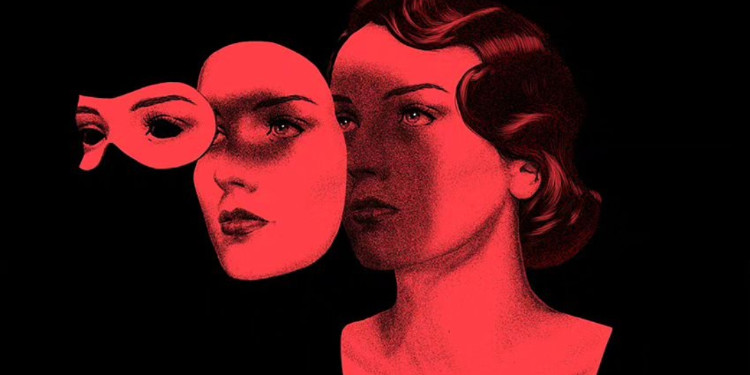
TR
Kebba Sanneh imzalı harika bir illüstrasyon bizlerle. Öncelikle illüstrasyonunu kelime dünyasında yaşatmam için destek olan Kebba Sanneh'e sonsuz teşekkürler.
Şimdi yüzümüzü illüstrasyona çevirecek olursak farklı katmanlardan hayata bakan bir kadın karşımıza çıkar. Bence kadının böyle resmedilmenisinin arka planınında derin bir içsel çatışma var. Kadını, gözlerini ve bakışını bir tarafa koyalım.
Yaşama uzaktan bakalım. Yaşamda karşılaştığımız herhangi bir düzensizlik veya problem anında temiz bir sayfa açma dürtümüz harekete geçer. Bu yeni sayfa ile de her şeyin bambaşka olacağına inanırız. İllüstrasyonun en alt katmanındaki gözler gibi inanırız.
Peki dürtüden destek alan bu inanç nereden gelir? Tabiki de tüm hücrelerimizde bile varlığını koruyan kadim duygu umuttan ileri geliyor. Umut'ta haybeye bir duygu değil. Anatomimizin bütününe işlenmiş muazzam bir biçimde uyum sağlamış olan bir duygu. Öyle olunca hayatımızın kırılma noktalarında beynimizin amigdala bölgesi tarafından oluşturulan "savaş ya da kaç" refleksi ve daha bir dizi hormonun, sinirin ahenkli çalışmasıyla, içimizdeki her şeyin bambaşka olacağına işaret eden umut çiçeği büyür. Ama dikkat! Bu umut zor durumlarda içimizi hadi bakalım yeni sayfa açalım diyerek rahatlatabilir. Fakat bu her şeyin bambaşka olacağı anlamına gelmez. Sadece başka yollarına olacağına dair ufak bir ipucudur. Sanneh'in 3 katmanla aynı görme eylemini tasvir etmesi gibi.
Oscar Wilde'ın Reading Zindanı Baladı isimli eserinde bu tarif etmeye çalıştığım umudun fizyolojisini bir cümle ile muazzam özetlemiş: İçimizden bir parça kopmuştu, Ve o kopan şeyin adı Umut'tu.
İşte tam olarak bu! İçimizden umut kopar ama bu hayatta bize bir adım attırıcıdır. Sanneh'in illüstrasyonundaki en öndeki göz katmanı kapkara. Sanki görme fonksiyonu durmuş. İçimizden bir umut kopar evet bize adım attırır ama her şeyi bambaşka yapacak bir sihirli değnek değildir.
EN
Here is a great illustration by Kebba Sanneh. First of all, many thanks to Kebba Sanneh for his/her support in keeping illustration alive in the world of words.
Now, if we turn our eyes to illustration, we see a woman who looks at life from different layers. I think there is a deep internal conflict behind the way women are portrayed. Let's put the woman, her eyes and her view aside.
Let's look at life from a distance. In case of any problem or irregularity we encounter in life, our urge to open a clean slate is activated. We believe that everything will be completely different with this new page. We believe like the eyes at the bottom layer of the illustration.
So where does this belief, supported by instinct, come from? Of course, hope comes to mind, the ancient feeling that preserves its presence even in all our cells. Hope is not a feeling for nothing. It is a tremendously harmonious feeling that is engrained in our entire anatomy. It is a tremendously harmonious feeling that is engrained in our entire anatomy. Thus, at the breaking points of our lives, with the "fight or flight" reflex created by the amygdala region of our brain and the harmonious work of a number of hormones and nerves, the flower of hope grows, indicating that everything. But be careful! This hope can comfort us in difficult situations by saying let's open a new page. But this does not mean that everything will be completely different. It's just a small hint that there will be other paths. Like Sanneh depicts the same act of seeing with 3 layers.
Oscar Wilde's attempt to describe this, in his work The Ballad of Reading Gaol, summed up the physiology of hope magnificently in one sentence: A piece of us was broken off, And the name of that broken thing was Hope.
That's exactly it! The hope within us is broken, but it guides us in this life. In the frontmost layer in Sanneh's illustration, the eye is a dark black. It's as if the biology of vision has stopped. A hope grows within us, yes it makes us take steps, but it is not a magic wand that will make everything different.








Yorum Bırakın